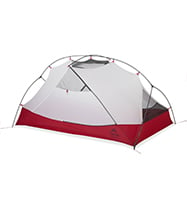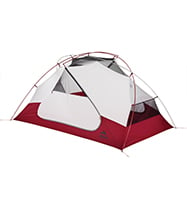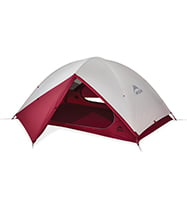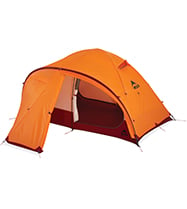Tent Fabrics Part 1: Fabric Specs
When you’re looking to purchase a tent, it’s easy to compare tent features, but it’s a little harder once you get into fabric specs. At MSR, we put a lot of thought into the details, including the type of fabrics and coatings used for each tent, and it’s worth understanding what the numbers mean. In this post, we’ll show you how to read the specifications of tent fabrics. In part two, we explain waterproof ratings and what they mean.
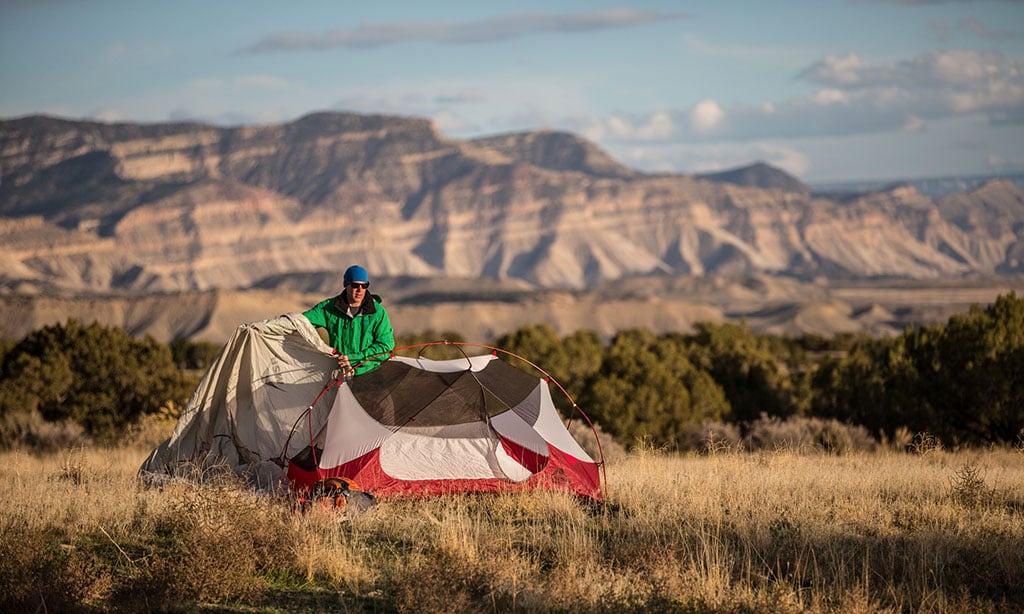
Let’s start with the tent’s spec description, typically laid out as a formula. Here’s an example:
20D x 330T ripstop nylon 1200mm Durashield™ polyurethane & silicone
[denier]x[thread count] [waterproof coating]&[water-repellent coating]
Denier, e.g. 20D
Denier is used to determine the thickness of the fibers in the tent fabric. It’s a unit of density based on the length and weight of a yarn or fiber. A single strand of silk is considered 1 denier. The fibers in a 40-denier nylon fabric have over 6.5 times the diameter of the silk strand, and almost 1.5 times the diameter of fibers in a 20-denier or “20D” nylon fabric.
As you can see, the higher the denier count, the greater the diameter of the yarn.
Does a larger denier number mean the yarn is stronger?
Often it does, but not always. Strength also depends upon the material. For example, the following tent fabrics are shown in increasing order of strength:
- Nylon
- Nylon 6
- Nylon 66
At MSR, we use our engineering and design expertise to determine when and where to use different fabrics to serve each tent best for its intended use. For example, we selected higher strength Nylon 6 and Nylon 66 fabric for the hard-wearing floors and rainflies in our Hubba™ NX and Carbon Reflex™ series backpacking tents. But when designing our Elixir™ series tents, we chose packcloth for the rainflies. Packcloth, a polyester fabric, is not as light as nylon but is more durable—and durability was a top priority for the Elixir tents. Polyester also doesn’t stretch as easily as nylon, making it more user friendly, and it’s naturally more UV and water-resistant. These are just a few of the many factors we consider when selecting fabrics for MSR tents.
Comparing fabric type, denier and thread count
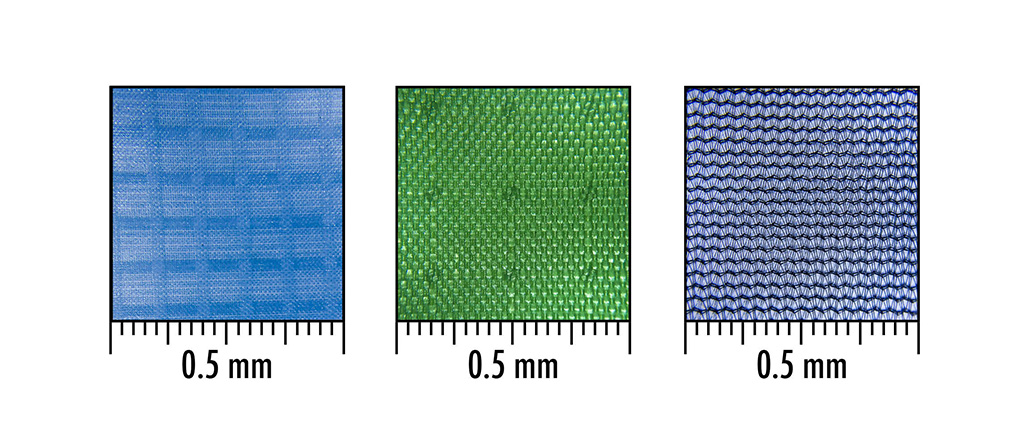 10D nylon 300D packcloth 10D micromesh (on blue background)
10D nylon 300D packcloth 10D micromesh (on blue background)
Thread Count (the “T” in 330T)
This measurement refers to the sum of the vertical and horizontal threads (or yarns) per square inch of fabric. A higher thread count doesn’t always mean a stronger fabric. For instance, our Carbon Reflex and Hubba NX tent canopies and rainflies are 20D nylon with high thread count of 330 threads per inch. However, our Elixir rainflies use only 210 threads per inch, but are stronger because of their 68D packcloth fabric.
At MSR, we carefully consider how thread count, fabric type and denier (fiber thickness) will affect the overall tent performance, and we make our decisions based not only on how the tent will be used (e.g. thru-hiking, weekend backpacking, basecamping), but also on where the fabrics are used in the different parts of the tent. Tent floors, for example, require strong, tear-resistant fabric while rainflies need to be strong yet supple.
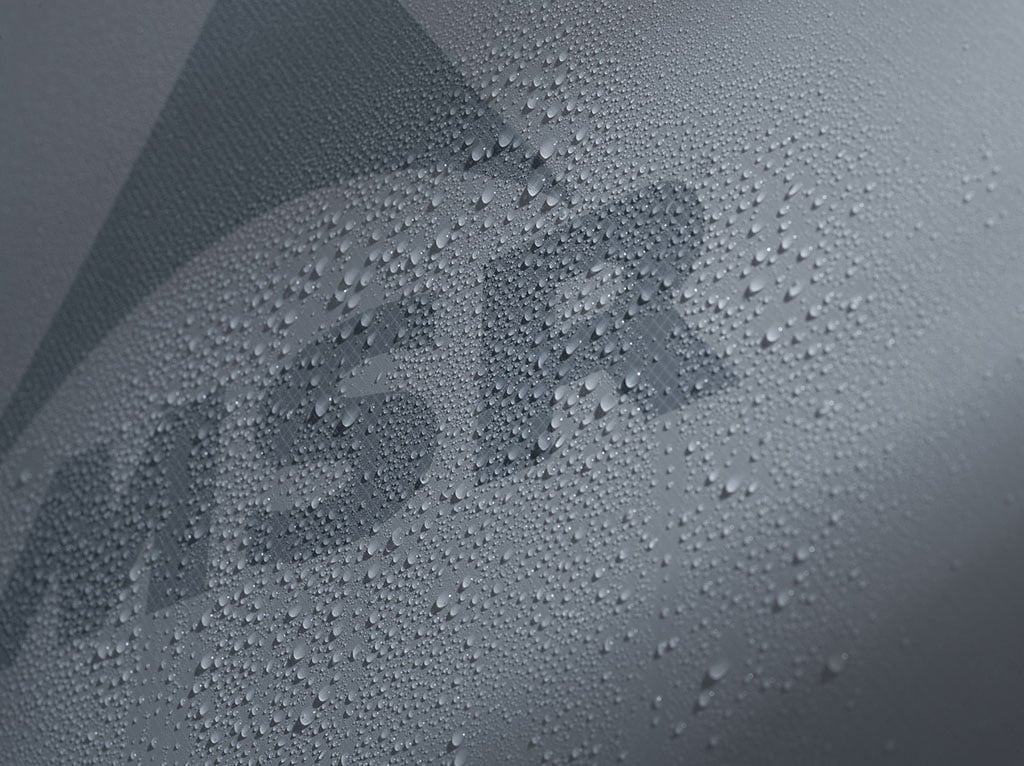
Waterproof and water-repellent coatings, e.g. 1200mm & silicone
The last set of specs in the formula refers to fabric coatings. The first part is the waterproofing rating. In short, a fabric’s waterproof rating measures how much water can be sustained on top of the coated fabric—in this case, 1200mm—before water can leak through. For each MSR tent, we select an ideal level of waterproof coating, which is applied to the interior side of the base fabric, to achieve waterproofness without compromising tear-strength.
The second part of the above spec refers to the type of water-resistant coating, such as silicone or a DWR (Durable Water Repellent) treatment, which is applied to the exterior side of the tent fabric that causes water to bead and roll off, helping to prevent it saturating the material. A silicone coating offers some UV resistance and makes the fabric softer, more pliable and a little stronger; a good choice for rainflies. Tent floors, which don’t require UV resistance, typically use DWR.
What to look for in your tent fabric specs
Ultimately choosing the right tent is a balancing act between strength, durability, weight and packability. And since a tent is built mostly of fabric, an understanding of fabric specs is a great advantage when searching for the right tent for your needs. The higher the denier or thread count of a given fabric, the stronger and more durable it will be. However, those same qualities will also make it heavier and bulkier to pack. While we make durability a cornerstone of every MSR tent, at some point, excess durability can be overkill, making some tents better suited for car camping or an expedition than high-mileage days on the trail. So, combine your new knowledge of tent specs with construction and pole materials, and you’ll be well on your way to finding the right tent for your next adventure. Fortunately, we’ve got you covered, whatever you need.
Related Posts:
- Designing MSR Tents — What We Stand For
- Terry Breaux: From Cycling the World to Designing MSR Tents
- 3-Season vs. 4-Season Tent: Which is Right for You?
- Tent? No Thanks. I Prefer Tarps.
—
Originally Published June 2nd, 2015.

